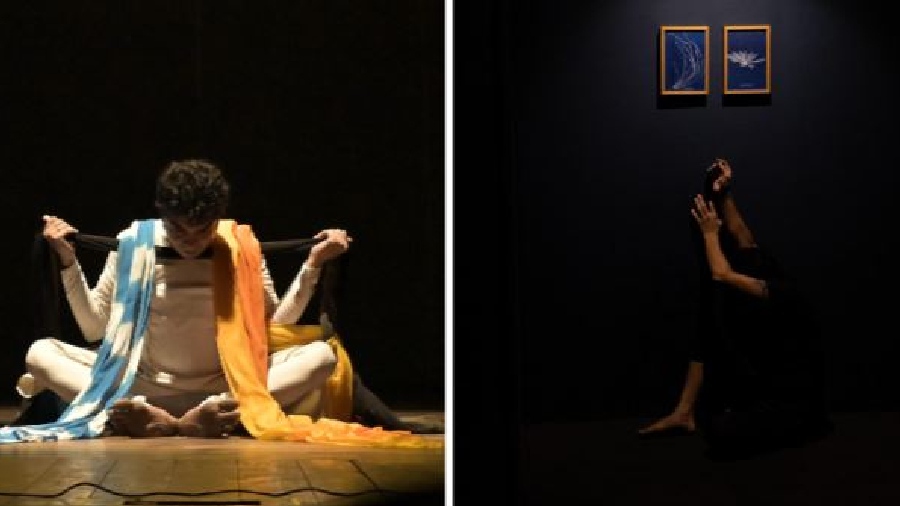Vikram Iyengar’s recent Kathak-based solo, Full(er) Circle (picture, left), was refreshing and provocative in equal degrees. Staged at Gyan Manch, the performance was all about forging fresh entry points into the form, both for the audience and the artist. There was clarity and complexity in Iyengar’s vision of Kathak as he negotiated a journey from root to re-encounter, searching for the personal within the centuries-old tradition and examining his relationship with its changing dynamics in the context of contemporary socio-political and environmental shifts.
Calling the first part of the solo, Frame, to lay out a performative framework of the form, as it were, Iyengar chose four pieces drawn as much from his fundamental training and inheritances from his guru, Rani Karnaa, as from his own body of choreographic works. Weaving in the various elements of Kathak — footwork, pure dance and abhinaya — he sought to foreground the different ways in which he inhabits his form. In a clever use of the traditional ‘conversational’ format of the Kathak recital where each piece is preceded by a description, he chose to speak about his connection with each and examine its relevance within his practice and current concerns rather than paraphrase its contents. And so, the ghazal, “Zindagi jab bhi”, becomes for him a vehicle to communicate the deeply syncretic identity of Kathak, which is singular in the canon of Indian classical dances as a form that intertwines both Hindu and Islamic histories and cultures. Labbaik, with its five-and-a-half beat cycle, is a complex, sublimely danced, and playful exploration of celebratory music, which allows him to make enquiries into how rhythm can tell its own tale through movement.
In the other two parts of the evening, Iyengar presented Water Bodies, a dance film made as an artist’s provocation, and Arrival, an interrogation of how Kathak responds to spiritual music and explores the individual’s connection with divinity. In this solo performance, which he initially created for an overseas audience, it was important for him to project a journey of coming full circle to discover from his changed perspective how the starting point had shifted. The performance was as much about departures as it was about returns.
Within the subtly virtuosic exploration of his form, he asked questions and found dense answers to what Kathak is today, what it is to him, and what power it has to speak to the initiate as well as the uninitiated. It also proffered perspectives on how to break classical convention even while holding on to its principles.
On another evening, at the Indian Museum’s art gallery, the exhibition Critical Zones: In Search of a Common Ground, ended with a performative intervention, The Earth is Wet (picture, right), also by Vikram Iyengar. The piece tackled climate change in a performance that travelled across the caliginous interiors of the art gallery, not through narrative scenes but with fleeting impressions of environmental emergencies, awash in Amlan Chaudhuri’s imaginative lighting. Given the gravity of the theme, the work was thoughtful, moving and unsettling.
The workshop showing of Music, Movement and Poetry — In C, led by Joshua Sailo and presented at the Max Mueller Bhavan, was playful and fun. It explored Sasha Waltz’s choreographic phrases. The elasticity of the dancing bodies, the repetitive phrases, and the infectious energy of the dancers kept one enthralled throughout the performance.











